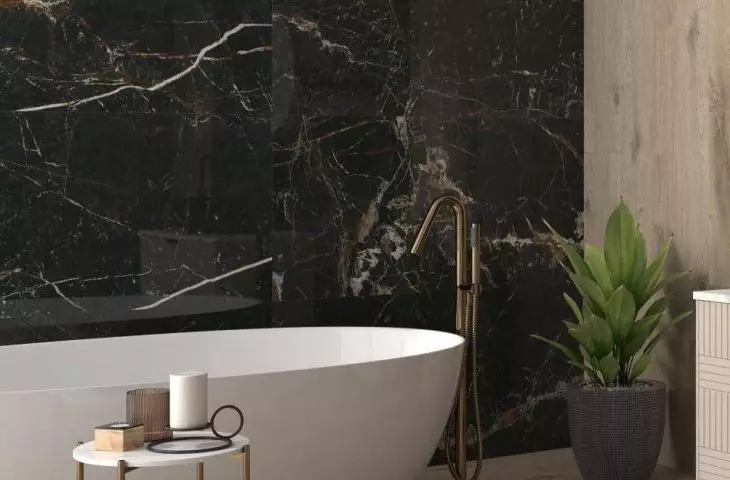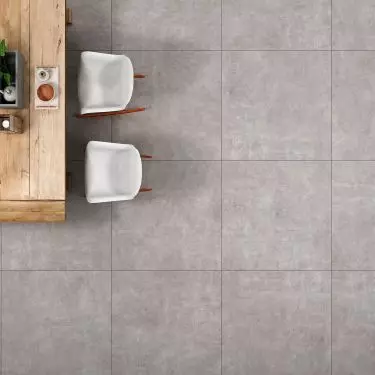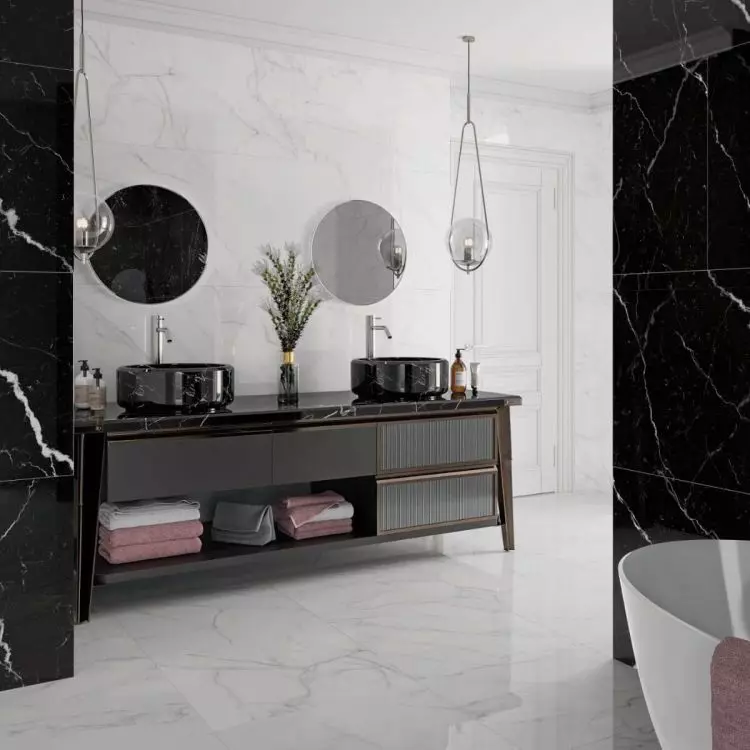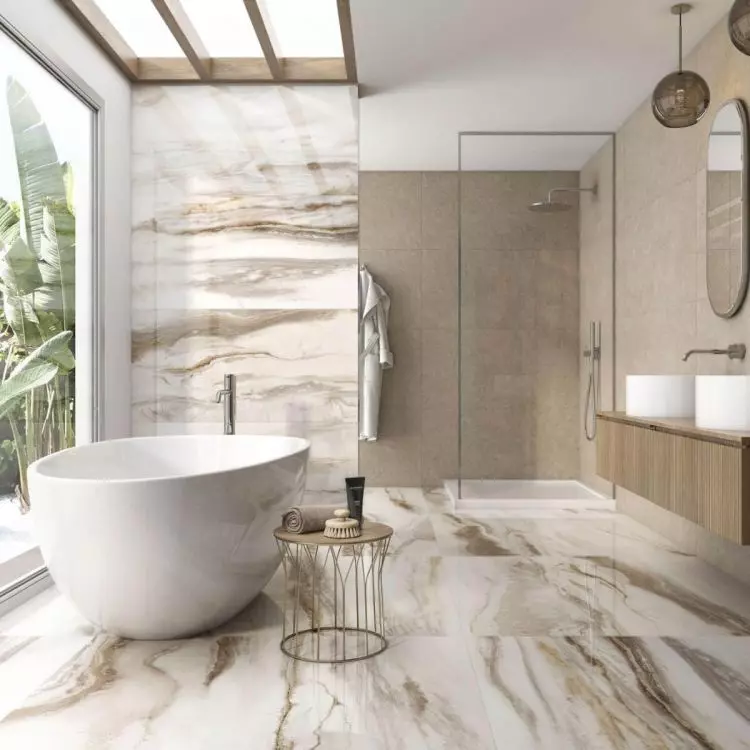One of the elements that can give a room a modern and elegant look are large-format tiles. This innovative solution is gaining popularity in the design world, allowing you to arrange your space in an extremely creative and striking way.
Thanks to fewer joints, a more uniform surface can be achieved with large-format tiles
© Hermann
What distinguishes large-format tiles?
Large-format tiles are tiles of large size, often exceeding standard dimensions. This are products which sizes are ranging from 30 × 60 cm, 60 × 60 cm or 50 × 50 cm, up to 100 × 100 cm and 300 × 100 cm.
Where are large-format tiles used?
Tiles of this type have found wide application in interior design, both in homes and commercial spaces. They can be used on floors, walls and even furniture or other surfaces. The right pattern and color scheme of tiles can completely change the character of a room, giving it a modern, minimalist, industrial or classic look.
Large-format tiles can be used on many different surfaces
© KLINK
Advantages of large tiles
One of the main advantages of large-format tiles is the visual consistency that comes from fewer joints, creating an elegant and modern room. Large format tiles are ideal for smaller rooms, as they optically enlarge the space. A limited number of joints also means a minimum number of places where dirt can collect. That's why large-format tiles are definitely easier to keep clean.
Where to buy large-format tiles?
When deciding to buy large-format tiles, it is important to remember that their manufacture is not easy at all. That is why it is worth choosing a well-known and respected manufacturers, who will guarantee the appropriate quality of workmanship, which will please us for many years. One such company is CERRAD. It is also worth checking out Tubądzin's offer. The full list of manufacturers we recommend can be found in the search engine of the Products for Home portal under the keyword "large-format tiles".
Large format tiles are most often made of stoneware or quartz sintering
© KLINK
Laying large-format tiles
Laying large-format tiles requires precision, experience and creativity. If you decide to use them, you need to keep several important aspects in mind. Large format tiles require precise cuts to fit the shape of the room. That's why you should use the services of a professional tiler, who has the right tools and experience. To ensure durability, it is necessary to use the right adhesives and grouts that are adapted to large-format tiles. Even before you get down to work, you should decide whether the tiles should be laid perpendicular or parallel to the direction of light. This makes a huge difference to the perception of the space and patterns.
Here's what the process looks like:
Preparation
- Make sure all the tiles are not damaged or scratched and have consistent dimensions.
-
Check that if the substrate is clean, dry, stable and level. Apply priming and leveling, if necessary.
Gluing
- Choose an adhesive suitable for large-format tiles. Some may require special adhesives with increased flexibility.
- Use a narrow brush to spread the adhesive on the substrate.
- Follow the manufacturer's recommendations for how long the adhesive remains active. Do not apply too much product, as this can lead to drying out before the tiles are laid.
Laying
-
Gently place the tile on the adhesive layer, carefully press it against the substrate and squeeze out excess product from under the tile.
-
Keep the width of the joints between the tiles consistent by using appropriate spacing crosses. Large tiles may require special crosses to maintain an even distance.
-
Check the level of the tiles regularly as you lay them. You can only make any changes until the adhesive has set.
-
Laying large tiles may require working in smaller areas at a time to prevent the glue from drying prematurely.
-
If you need to trim tiles, use the right tools and techniques to get an accurate result.
-
After tiling, wait for the adhesive to dry completely before grouting.
***
We encourage you to use the database of reputable and reliable ceramic and stoneware tiles manufacturers we are building on the Products for Home portal, as well as the articles we publish about ceramic and stoneware tiles.






























